I recently received an email from PEO Soldier’s Public Affairs team inviting me to a media round table on a rather intriguing subject, “Shooting around corners? Sci-fi or battlefield reality?” With a promise like that, of course I had to find out more.
Yesterday, several members of the media had an opportunity to listen to a presentation by COL Michael Sloane, Project Manager Soldier Sensors and Lasers (PM SSL). He was accompanied by LTC Timothy Fuller, Product Manager Soldier Maneuver Sensors (PM SMS) and assisted via telephone by Mr. Phil Cheatham, Deputy Branch Chief, Electronics and Special Developments, Maneuver Center of Excellence (MCoE) at Fort Benning.
First off, I’ll give you a little background on PM SSL. COL Mike Sloane began by telling us about his team’s mission which is to provide the tools needed for the US Soldier and Squad to maintain overmatch, in any environment. In this case you’ll see, they are offering leap ahead technology to our Soldiers.
PM SSL provides Soldiers with improved lethality, mobility, and survivability in all weather and visibility conditions. Soldier-borne sensors and lasers enhance the Soldier’s ability to see in all battlefield and lighting conditions, to acquire objects of military significance before the Soldier is detected, and to target threat objects accurately for engagement by Soldiers or precision-guided munitions. These systems provide critical, on-the-ground direct support to U.S. forces.
As the security environment changes America’s Soldiers expect the best piece of equipment for the mission. They deploy anytime, anywhere around the world and thier equipment needs to work. COL Sloane told us this is why they keep their equipment reliability rates high; 100% availability.
It’s a Team Effort
PM SSL doesn’t do this in a vacuum. In addition to working closely with the other PMs at PEO Soldier, they maintain relationships with the Centers of Excellence (Maneuver, Fires and Aviation), the ARDECs under AMC, particularly CERDEC and its Night Vision and Electronic Sensors Directorate (Night Vision Labs). Night Vision Labs is located in the same compound on Fort Belvoir as PM SSL making it easy to interface. In fact, PM SSL has embedded personnel in the lab. However, COL Sloane is quite proud of the rapport his team has built with the warfighter. They spend a lot of time visiting troops both CONUS and abroad.
While MCOE at Ft Benning identifies technology gaps, PM SSL solicits input from Soldiers. Throughout the process, PM SSL conducts sessions referred to as ‘Soldier touch points’ which help ensure that their fingerprints are on the designs. While these range days focus mainly on the warfighter, they strive to include every MOS in the process. They also work with the readiness centers such as JRTC to observe Soldiers and Squads as they train on live fire lanes to extract feedback on how they use their equipment. Whether something is ised can be just as important as how.
Last but not least, PM SSL regularly, and in great detail, interfaces with industry, conducting numerous industry days for each program as well as hosting industry for meetings at Ft Belvoir.
Better Buying Power
COL Sloane mentioned a couple of ways they make more effective use of their procurement funds. He said they continue to incentivize industry through competition. I’ll add to that by pointing out that they offer competition that results in contract awards, unlike some programs that end up being money pits for industry. This competition also helps control pricing and results in improved Size Weight and Power (SWAP) performance. Additionally, they also utilize Government Furnished Equipment as system components in some instances, which helps control cost. For one program, these combined measures have saved the U.S. Army $198 million.
New Technology
While the background was critical to a frame of reference, the true subjects of the presentation were two current issue pieces of equipment managed by PM SSL, the Thermal Weapon Sight and AN/PSQ-20 Enhanced Night Vision Goggle as well as the follow-ons to both of these systems.
LTC Tim Fuller walked us through these technologies. The current Enhanced Night Vision Goggle II (ENVG II) is being updated with the advent of the ENVG III, whereas the current Thermal Weapon Sight’s (TWS) follow-on is the Family of Weapon Sights-Individual (FWS-I). He described the fledgling Family of Weapon Sights as a “leap ahead”. They’ve been working for about two years with this capability which improves Soldier survivability, lethality, and mobility. Additionally, both of these new systems can be used alone or in conjunction with one another in a new way to offer what is called Rapid Target Acquisition or RTA.
Since in the late 1990s the Thermal Weapon Sight program has fielded three generations of sensors, each reducing size and weight while increasing performance. For example, they’ve decreased weight from the Gen I’s 3 lbs to just under 2 lbs with the latest variant. Additionally, that first variant was a stand-alone only model while the newest TWS can be used as a clip-on sight to extend the capability of existing optics. They’ve also lowered the original cost from around $11,000 to $5,000 now.
The evolution of the Enhanced Night Vision Goggle is interesting. The current ENVG II is a more elegant design than its predecessor and features a wider FOV for the thermal. That’s due to a higher resolution thermal sensor. While the original ENVG I, which was built by ITT, has a smaller I2 tube than we are currently used to experiencing with the AN/PVS14 monocular, the II and III generation each use a standardized tube which is provided by the Army to the manufacturer as Government Furnished Equipment, and integrated into the goggle during production at the factory.
This offers several advantages. First, it ensures a common I2 tube, meaning known performance characteristics. Second, it allows the government to negotiate directly with the I2 tube manufacturers for greater savings across these and other programs rather than having vendors in each program purchase the tubes at different prices. Finally, the government can determine schedule priorities of when programs will receive tubes.
Once again, the Army went to industry with a set of attainable technology goals and industry responded by using their own internal Research and Development (IRAD) Dollars to be competitive. FWS family will use uncooled, forward-looking infrared technology. The first of these, the Family of Weapon Sights – Individual which is currently in development, can be used with the M16, M4 and now the M249. It is the smallest and lightest thermal weapon sight in the Army’s inventory and can be used as a stand alone sight or as a clip-on for use in conjunction with optical sights.
Here’s where it gets interesting. The FWS-I can now “talk” to ENVG III. The FWS-I is attached to the Individual Weapon or SAW and its reticle can be superimposed as a Narrow Field of View image on the display of the helmet worn ENVG III, right on top of the already fused I2/onboard thermal sensor image. With this technology, a Soldier can see where his weapon is pointed, whether or not it is shouldered and characterize what he is looking at, thanks to the fused image.
These signals are now all digital and the Soldier can individually control the channels which are fused into a common display. Soldiers can toggle through three modes: Spatially aligned mode, Picture in picture mode and FWS-I only mode.
The digital image is transmitted from the FWS-I to an antenna on the ENVG III and then routed through a fiber optic cable to the smart battery pack mounted at the rear of the helmet. This is where the processor is located. This special, ENVG III compatible battery pack is a component of the FWS-I. The ENVG will continue to be fielded with its own standard battery pack. At the processor, the thermal image with reticle is stitched unto the ENVG’s display in the processor. Everything is lined up with one image embedded into the other. A major advantage is that RTA keeps the Soldier passive so no need to use active laser and create a signature.
Some of you may be interested in how the FWS-I ‘talks’ to the ENVG III. The Army has chosen a low power emitter with a range of about out to three feet but won’t go into any details on signal characteristics.
Separate Image Intensification (I2) and Thermal channels are fused into a single display. While the thermal signal offers 18 to 26 degree FOV, with the ENVG III you get 40 degree FOV in I2 mode. This is common to the standard PVS-14 tube manufactured by L3 Warrior Systems and Harris. These GFE tubes are provided to the two ENVG vendors. Once again, this means that ENVG manufacturers, BAE and DRS integrate the government furnished tubes into the ENVG, which saves money.
The fused image will allow the green I2 image to be enhanced by a thermal overlay in orange that indicates a heat signature. This is great for identifying camouflaged targets or those obscured by smoke. Now, the narrow FOV images from the FWS-I can also be integrated into the image, including the reticle, in the correct aspect of the Soldier’s view. This means that Soldiers can observe or engage a target without being directly behind the weapon’s sights. Soldiers can not only see around corners, but shoot around them without exposing themselves. Conversely, if the Soldier looks too far off axis, the FWS-I’s reticle will disappear from view.
With the FWS-I, you are looking at 18-26 degree FOV. The FWS-I significantly increases the effective range from 550 meters for the current issue light TWS out to an astounding 1000m range. This almost two-fold increase is due to focal plane array improvements. Such SWAP improvements also equate to a smaller Soldier load in size and weight.
What About Aiming Lasers?
There’s still a requirement for laser pointers and they aren’t going away. If you’re used to using them, you’ll continue to be able to.
New Helmet Mount On The Way As Well
There is a new single hole, helmet mount assembly that will come with the ENVG III to accommodate this new architecture. This is a government design that has been provided to industry for production and incorporated into all new helmet designs coming out of PM Soldier Protection and Individual Equipment. The full ENVG weighs in just under two lbs along with full battery pack, which also serves as a counterbalance for the sensor.
Who Gets Them and When
ENVG III goes into production this summer with fielding in early FY17. FWS-I is just behind with Low Rate Initial Production beginning this summer. Fielding should commence in late FY18, early FY19.
Fielding priorities are up to the Army but they have already fielded 9,011 ENVG I starting in 2009, with another 16,000 ENVG II in the ensuing years. PEO expects to field 41,000 of the new ENVG III. As you can imagine, there’s quite a bit more capability in the newest version so they’ve got a plan to replace those 9,000-plus original models. There are enough cost savings in this latest buy that they can not only purchase enough ENVG IIIs to replace the initial version, but they’ll even have some spare change.
Due to it’s limited numbers, the ENVG II has essentially been fielded as a sensor for leaders. According to Mr Cheatham, the Basis of Issue Plan for the ENVG III and FWS-I is much more generous. The plan is 24 ENVG III per Infantry platoon and 18 FWS-I per Infantry platoon, across all formations including Infantry, Stryker and Heavy as well as ABCT.
New Capability Spawns New TTPs
Considering Soldiers will more effectively be able to observe and engage targets without being directly behind their weapon, this capability will result in new Tactics, Techniques and Procedures. PEO Soldier has been working with MCOE’s Directorate of Training to identify ways in which this technology can be used so that they can incorporated into doctrine and training programs of instruction.
Some of this information will come with the system’s New Equipment Training which goes to the unit and uses a ‘train-the-trainer’ approach to prepare NCOs to train their subordinates. The planning for this transition to increased use of thermal weapon sights across the force is massive. The Systems Training Plan includes not only matching trainers and units with the fielding schedule but also ammunition and ranges outfitted with thermal target arrays.
Always Use Lithium Batteries
I’ll throw in another plug for Lithium batteries here. The Technical Manuals call for their use with these pieces of equipment. Not only do they provide better power than alkalines, but are more cost effective. Even at a unit cost of 1.5 to 2 times the rate of alkaline batteries, the L91 lithium battery last 5 to 10 times longer. Additionally, lithium batteries offer increased performance in cold weather.
Compatibility Is Key
As these two complimentary programs progress, the PM is working on cross compatibility between vendors to ensure that if a Soldier has a FWS-I from BAE and an ENVG III from DRS (or vice versa) that they work together.
Future Systems
The Family of Weapon Sights will grow to included Sniper and Crew Served Weapon sights, which are in development. A Request For Proposals is coming soon for the Crew Served variant which will offer an onboard display as well as a remote helmet mounted display (HMD). Soldiers manning crew served weapons won’t necessarily be equipped with the fusion goggle so that’s the reason for the dedicated HMD. The Sniper sight is envisioned as a clip on thermal sight that will interface with their daytime glass. It is still in requirement definition.
In Closing
COL Sloane finished the briefing by reiterating that their work with various stakeholders has been vital to the success of these programs. I for one, am pretty excited about the syndergy im seeing with this new capability. I can’t wait to see it placed in the hands of our Soldiers and how it changes the way they fight.


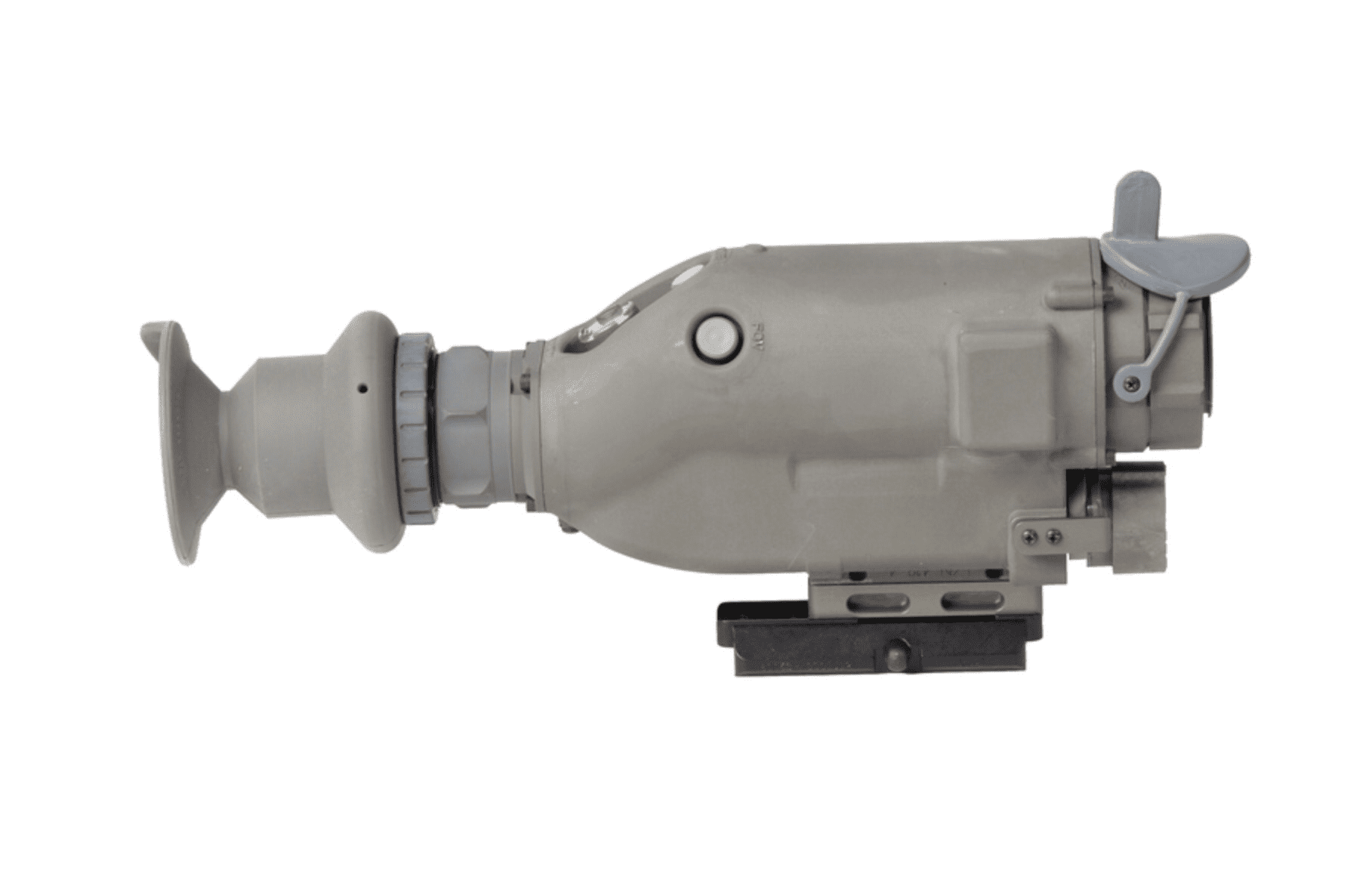
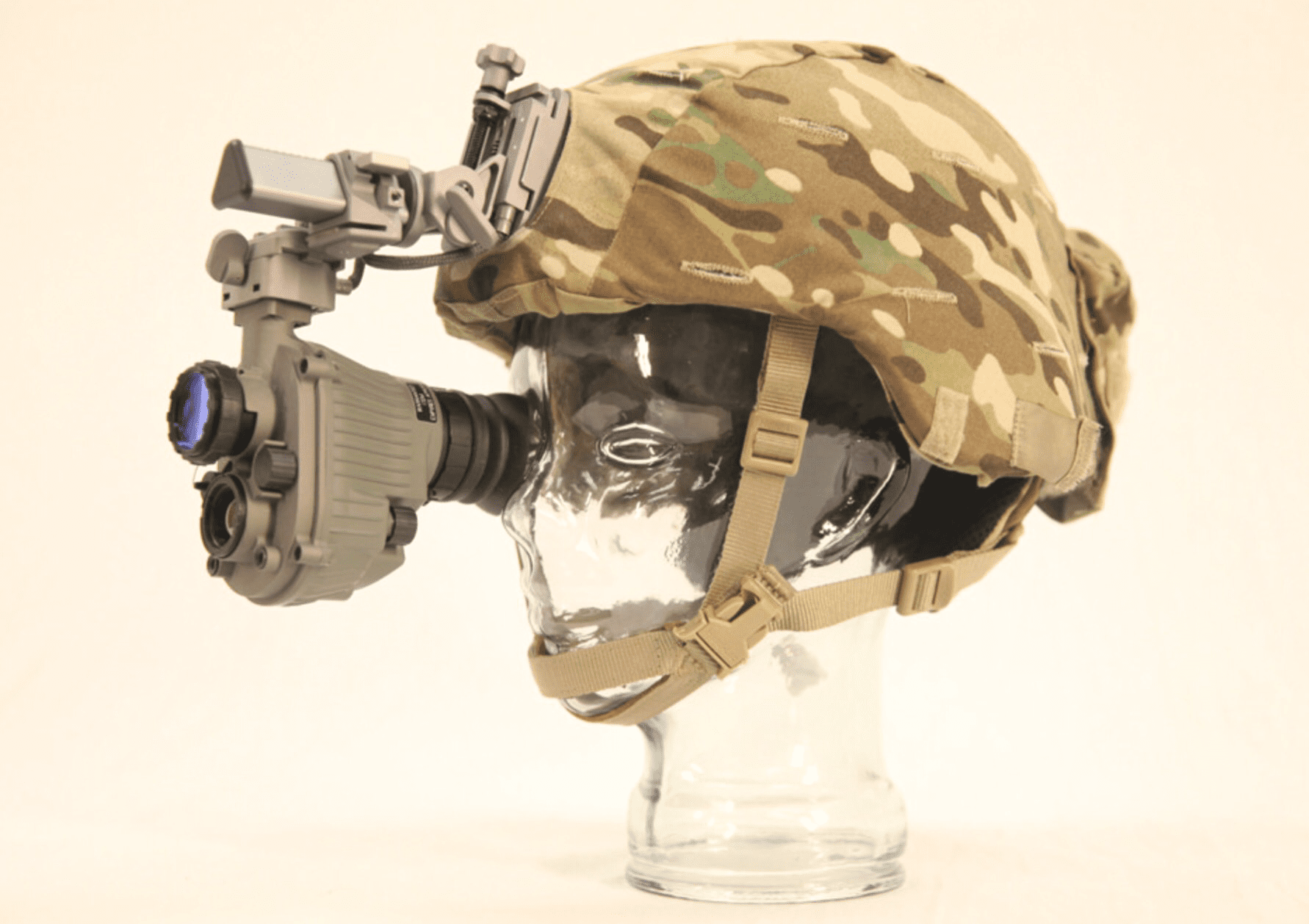
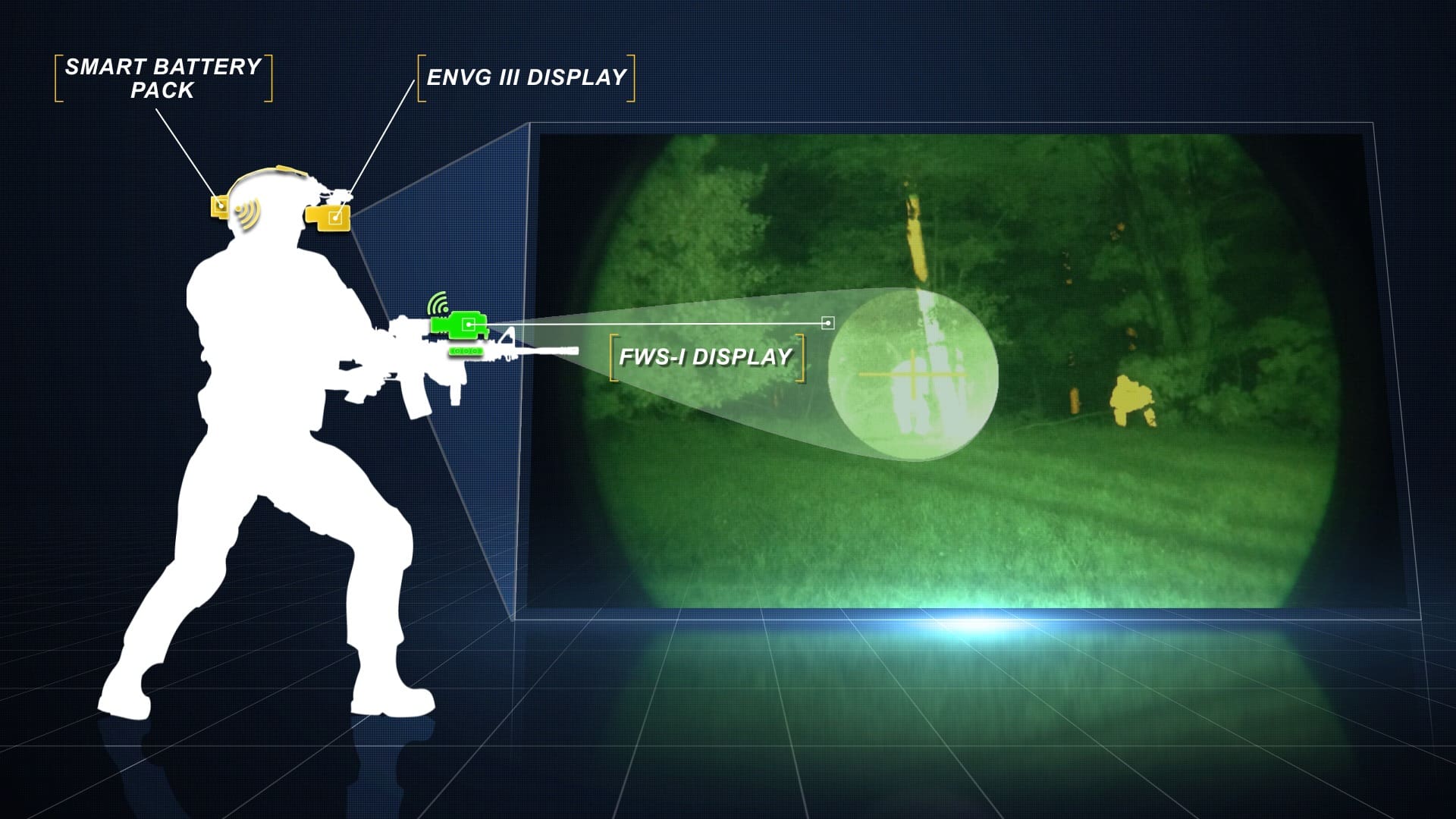
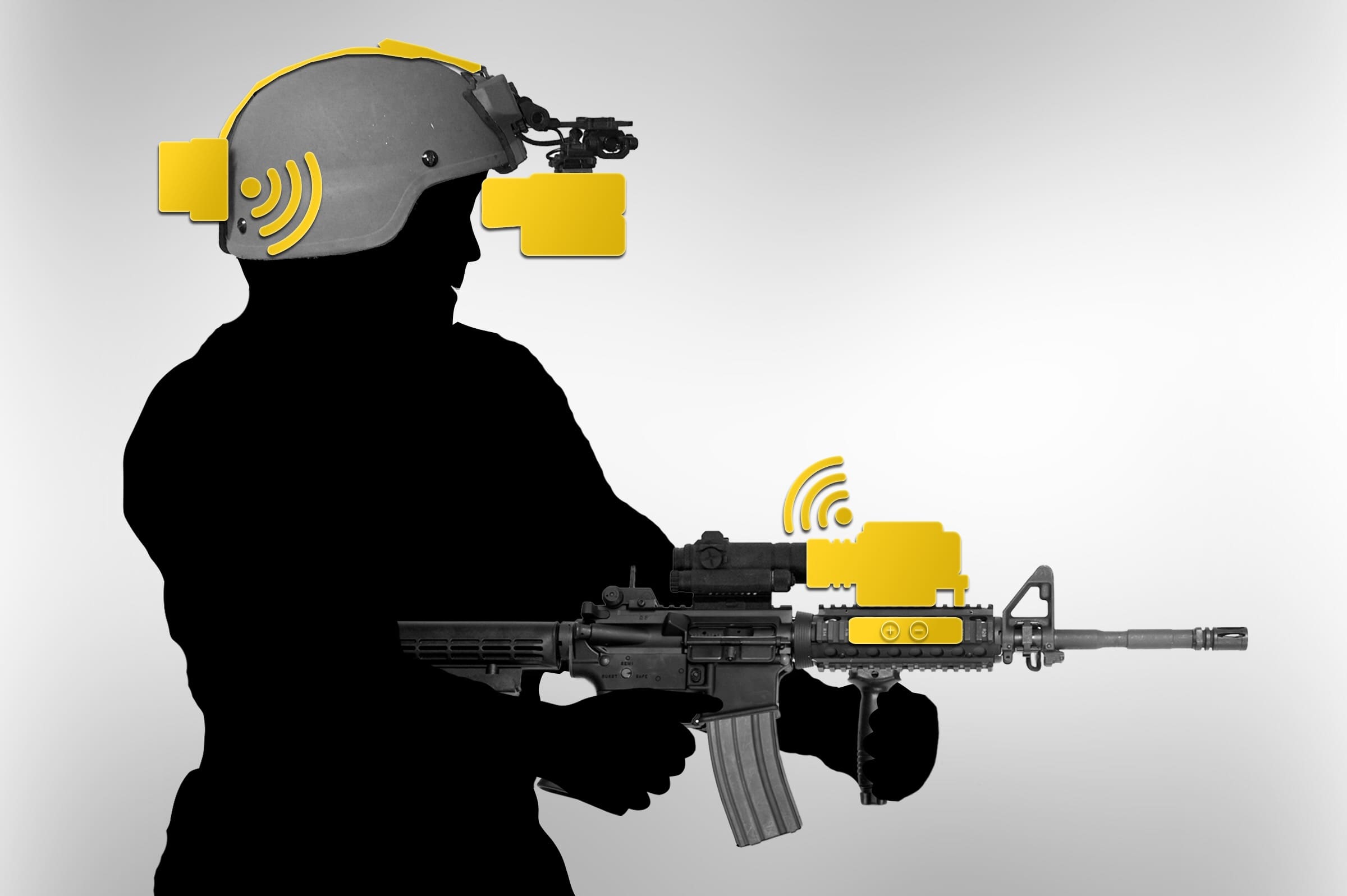
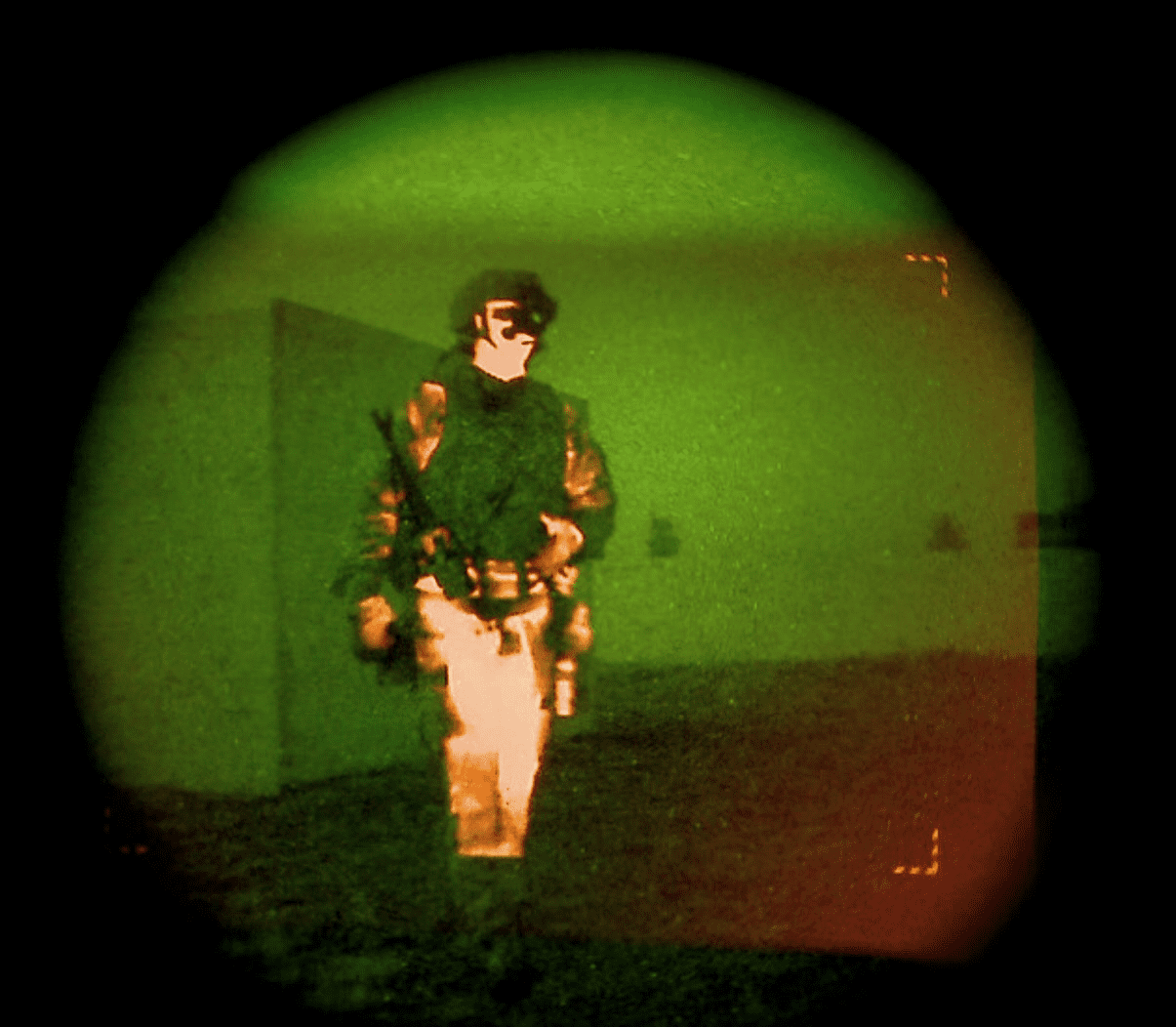
So, this allows to aim fast at night without using PEQs with IR laser?
Or day
This is fascinating and it appears that at least some elements PEO Soldier can pursue increased capabilities and lower costs in a timely manner with a good working relationship between industry and government.
I think any concerns about low-powered emitters as an electronic signature at the ~3 foot level is moot (you already have an infantry squad within the room if this is vaguely accurate, even with detection ranges at the square of the effective range) but jamming and interference is a possibility, especially if a unit is compromised and reverse engineered.
Perhaps a cable with breakaway connector (a la Apple MagSafe) might be a future enhancement but that brings new snag and tangle hazard.
I remember a proposal here in Spain for something similar, it uses the sling to pass the cable to the neck-shoulders area without adding a new snag hazard.
Would love to see a dual-tube version.
When is PEO going to release their own patented lesser performing version?
After they fund one for Crye.
Or work closely with Crye to develop one and then end the project with no contracts and Crye holding a bag full of costs which they are then free to commercialize to recoup their costs and create a new industry segment.
Wait, are we talking about Multicam again? 😉
The Tech looks incredibly awesome… straight out of a Sci-Fi movie.
It’s an incredible force multiplier for our military, though I’m sure it will come with it’s problems (possible loss in some situational awareness, possible mis-identification of targets, or other possible problems that come with all new tech)
What gets me, is who’s going to use this? With all the funding and personnel cutbacks we’re loosing 40,000 +/- soldiers, and now going to spend millions outfitting those who are left with very expensive technology, that can (and will if you go along with Murphy’s Laws) fail. We’re taking the most important part out of the equation, the men and women to actually operate said equipment.
Very awesome Tech, would love the opportunity to see it first hand, just a bit disappointing in the way money is being spent on toys instead of soldiers.
That’s an example of govt bureaucracy at it’s finest- the program was likely funded years ago. It’s like freight train brakes versus BMW brakes. Sure they both stop the forward progress of their respective vehicles, but it takes some longer to come to a complete stop than others.
That doesn’t mean this is a bad or wasteful program, but you’ll see more of this and the development of items as the force is being trimmed to save $$$.
There are already items like this available to SOF and have been for MANY years. Tangible cost savings could be had if the big army stopped re-inventing the wheel and would leverage other programs already fielding items to SOF. In most cases, they are already combat proven. But then people would lose their jobs and “their” programs and bureaucracy doesn’t like that.
I could list numerous examples where in, the army could have directly benefited NOW (at ZERO cost) from leveraging SOF. Why doesn’t it do so?
Maybe these cost half as much since for some unknown reason, the army thinks one tube is better than two.
There would be a significant savings in 1 tube versus 2 tubes. The single most expensive component is the image intensifier tubes. The packaging of the final product (chasis, buttons, etc) is relatively cheap compared to it. It sounds like they are leveraging a host of existing tech to integrate into a new package.
I for hope this overcomes some issues with the PVS-14 such as running them in rain and inclement weather. Hopefully the mounting system is a leap over what is current issue.
What comparable thermal/image intensifier is SOF running? You said there’s many.
If SOF isn’t running/developing one maybe that’s why the Army is going alone. This might not be a program of waste as you allege.
You know there are occasions that SOF piggybacks on conventional projects to realize cost savings (conventional buys more and the money comes from their side). The M855A1 is a recent example.
Maybe the Army goes with one tube vs two because it is a force of 800k when SOF is 60k?
SU-230, SKEETIR, PAS-23 etc. There are quite a few models that have been in use for years now by SOF, that are better than the Big Army offerings, in terms of size, effectiveness, battery life and so forth.
But they don’t do this. That’s the point of this program.
There are fusion goggles and add-ons that overall thermal signatures onto NVGs. I would not be surprised if there were similar endeavors under SOF funding to provide the capability laid out above re the reticule information.
Overlay rather^
There are. You can get a COTI pretty inexpensively.
SU-230 – Not Thermal, Image Intensifier or import data from another device
SKEETIR – Not an Image Intensifier. Don’t know if it can import data from another device
PAS-23 – Not an Image Intensifier. Don’t know if it can import data from another device.
These might be better in their individual niche (I haven’t looked at their cost). They don’t put all the capabilities of the ENVG in one package (with all the weight/space advantages that go with that capability) AND incorporate the input of another device.
SOF may have something. What is it and what does it cost?
Imagine the direction the discussion would take if someone from the conventional side suggested to the SOF side, “here, you can attach these two components together and it does what that one piece of SOF equipment does, is better and we’ve been using it longer.” It’s interesting that it so hard to give the conventional Army any props? I commented about this phenomena recently in another thread…
I think this is a good program
SSD – gotcha. My comments weren’t directed at you.
FWIW you guys are generally very objective (except for multicam) and I value the info your provide tremendously. My comment about criticism & props was directed more at the folks that comment on everything else.
Hey, we know troops love to complain but the one sidedness is fascinating to me.
We are very objective regarding MultiCam and the only ones reporting the Army’s actions. If the Army were willing to openly discuss the things they’ve done, we’d be happy to report it, but they won’t and that tells us they’ve been in the wrong, and they know it.
Yes, you are far in the lead of anyone else in reporting on camo and THANKS.
“very objective”? No, not as much.
“If the Army were willing to openly discuss the things they’ve done, we’d be happy to report it, but they won’t and that tells us they’ve been in the wrong, and they know it.”
No, not really. Look at how the Army developed M855A1. It specifically kept talking the “green round” angle while keeping the increased lethality angle under wraps and for great reasons. http://www.refactortactical.com/blog/the-m855a1-green-round-the-rest-of-the-story/
You may be right but not engaging doesn’t prove guilt. There are many reasons not to engage.
Lol, not with Camo. Not talking is just plain old hubris which is a real problem for a democracy. It will catch up with them.
Unless of course you are insinuating that Scorpion is some sort of secret super Camo. But that was someone else and not the Army.
By the way, they still won’t talk about the ammo but there’s a story under all of that, and it’s ugly.
Thanks for the report!
Low power emitter is going to get you killed, three feet is the usable range but the detectable range will be far greater. there is a DIY hack for a blue tooth usb dongle using an alligator clip as an antenna that boosted detection ranges to 250 meters. Imagine what a national lab could or more likely has done in the EW detection field. Jamming will be an issue as at that low power level a small device (pocket sized ) could jam it out. the freq its on will be easy to figure out as well with off the shelf tech.
Considering almost everyone is wearing a radio now, this isn’t that big of a deal.
am i the only one thinking land warrior with wi fi ???
Land Warrior didn’t do this
Land Warrior had a thermal sight mounted on the weapon that pushed the image into the soldier’s head mounted display via a cable allowing the soldier to engage around corners/obstacles.
But it didn’t fuse I2 and thermal and it didn’t stitch the weapon’s thermal reticle unto a fused image on the HMD.
True, you had to switch between different components to get those inputs.
Does it Auto Focus? If you are looking into the distance and then have to look back at your compass or map do you have to manually refocus or does it have the ability to adjust automatically? I have always found this to be a problem with our current NVD’s.
That is the one thing that I hate about the pvs-14. I wish it had an autofocus!
I’m consistently amazed at how inferior the “Big Army” thermal offerings are to the ones issued to SOF. Bulky, poorer resolution, battery life etc. Whole lockers of unwanted PAS-13s in various models, gathering dust. Compare that rifle mounted version above to say the SU-230 (which is fairly old at this stage) or something like the SKEETIR. Night and day difference.
Maybe the Army has to equip a force of 800k on a per capita pittance of what SOF’s 60k are supported with?
Cool cape. The emphasis on “around-the-corner” engagements seems a bit impractical. Certain functions on new toys tend to go completely unused over time as end users like to keep it simple.
I tend to agree,but there are a few pretty stable positions that can make the around-the-xxxxxxx shooting work and not having a set head/ eye position would make them a lot faster and enhance visibility while in the position. The first one that comes to mind is “brokeback prone”. Kyle Lamb teaches a similar position, but both use the same basics of the shooters forearm absorbing recoil through the vfg rather than the shoulder through the buttstock.
It’s been awhile since I’ve dont a VT but yeah I could see that position being applicable. However, if one finds themselves in a situation to have to use them they’re prolly in all kinds of duress. Mount/flip down device + pwr on + sync devices = good usage of crucial seconds? I hope the trainers are smart about developing/changing TTP’s around a specific tool/piece of kit.
Yep, will take a lot of training to get some used to that,kids will grasp it almost immediately because it is loosely replicated in video games where you always have a rough aiming point but get on the sights for longer range. The gear will have to be 100% or it will stay in the ruck, takes a lot to trust something new but the guys in the 60’s felt the same about I^2..
So better than PSQ-20?
Yes, I’ve seen some pretty cool stuff.
Have they improved the thermal overlay from that of the PSQ-20? I think the biggest leap this tech will make is with the ability to intelligently highlight thermal signatures, i.e. only those that fall into a given range for a live body.